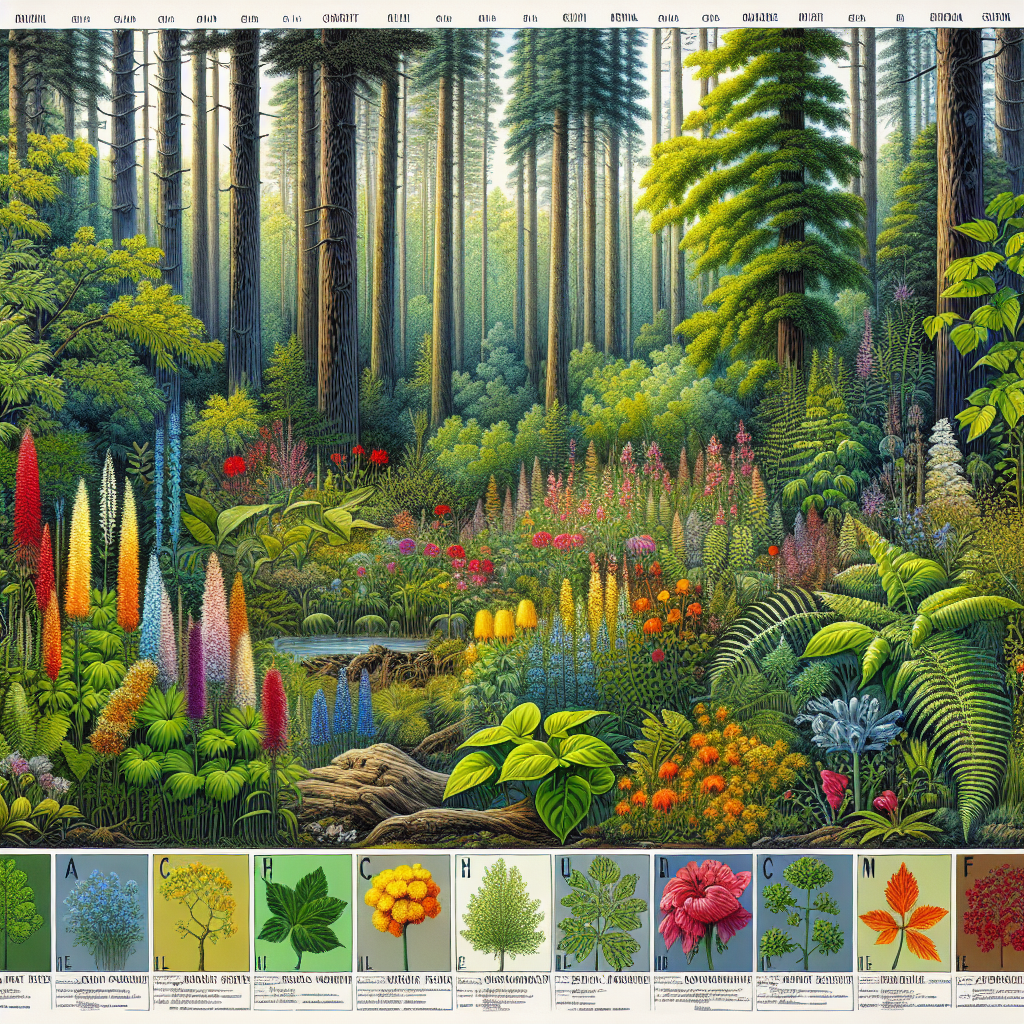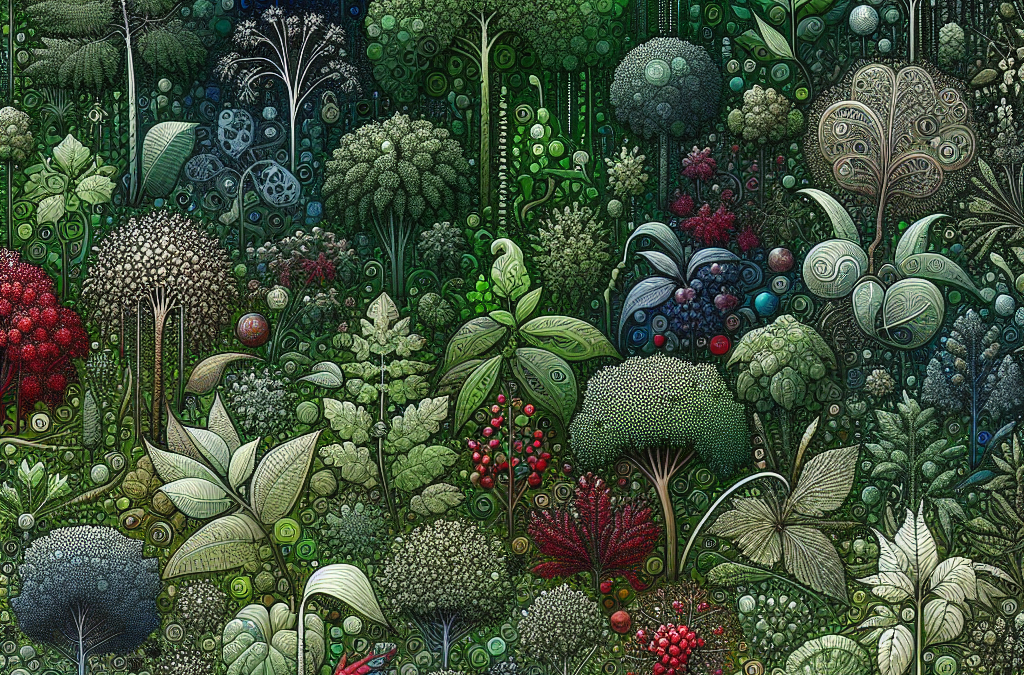Embarking on a journey into the wilderness, one must always be prepared for the unknown, and one crucial aspect of that is the ability to identify plants. “Plant Identification: Safety and Edibility in the Wild” sweeps you into the green world, guiding you on how to distinguish between the safe and the dangerous, the edible and the inedible. Don’t be intimidated! With this knowledge, you’ll confidently stroll through forests, fields, or gardens, fearlessly savoring what nature has to offer, while understanding and respecting its potent power.

Importance of Plant Identification
Plant identification may seem like a hobby or pastime for some, but it’s more than that. This skill is essential for your survival in the wild and can also add some fun to your culinary adventures. On top of all this, plant identification contributes significantly to the field of science.
Survival Implication
Imagine yourself in an unfamiliar wilderness. You’ve run out of food supplies, not a hint of human life in sight, and your survival depends on eating what nature provides. Knowing how to identify edible from poisonous plants is literally life-saving. With proper plant identification skills, you can sustain yourself and those around you.
Culinary interest
Identifying plants isn’t just about survival – it can also bring excitement to your kitchen. Many wild plants can offer refreshing and unique tastes to your dishes. Wild berries, edible flowers, or various herbs might just become an exciting addition to your culinary repertoire. However, it’s vital to correctly identify these plants to avoid unpleasant – or even dangerous – culinary surprises.
Scientific Significance
Beyond survival and culinary uses, recognizing plant species is fundamental to scientific research, particularly in areas such as ecology, pharmaceuticals, and, of course, botany. Accurate plant identification is essential not just for species preservation but understanding their role in ecosystems and potential uses in medicine and other industries.
Basic Botany for Plant Identification
Before you start identifying plants, ensuring you have a basic understanding of botany is important. This will help you differentiate various plant families and read plant structures correctly.
Understanding Plant Anatomy
Plant anatomy provides the structural framework for plant identification. Familiarizing yourself with plant parts – the roots, stem, leaves, flowers, and fruits – along with their respective shapes, sizes, textures, and colors can make plant identification a whole lot easier and more accurate.
Recognizing Plant Families
Did you know there are tens of thousands of plant species? Thankfully, these species are categorized into families, making identification more manageable. Different plant families have unique attributes; for example, the mint family has square stems and strong scent, which makes them easier to determine.
Reading Plant Structures
Learning to read plant structures is like learning a new language. The way leaves are arranged, the form of the flower, and the configuration of the roots tell a story about the plant’s identity. Understanding plant structures is a major step in becoming proficient in plant identification.
Methods of Plant Identification
Identifying plants can be achieved through various methods. Each approach has its benefits, and using a combination often yields the best results.
Visual Identification
Identifying plants visually involves looking at aspects including leaf shape, plant height, and flower color. It might seem straightforward, but visual identification can be trickier than anticipated, mainly because many plants have similar appearances.
Using Field Guides and Apps
Field guides are a valuable tool for plant identification. They offer pictures and descriptions of various species and can be customized to specific regions. In addition, several mobile apps offer plant identification features and are a handy tool for plant enthusiasts.
Understanding Plant Dichotomous Keys
Plant Dichotomous Keys are technical tools for plant identification. Consisting of a series of choices that lead to a specific plant species, they’re usually provided in field guides or botanical references. Though they can seem intimidating at first, they’re a sure way to identify plant species accurately.
Identifying Edible Plants
In a survival mode, being able to identify edible plants can save lives. However, it’s important to note that not all greenery is safe for consumption.
Common Edible Wild Plants
Several wild plants like dandelions, stinging nettles or wild garlic are safe to eat. Familiarizing yourself with the appearance and habitats of these plants can widen your food source possibilities.
Telling Edible Plants from Poisonous Lookalikes
Sometimes, edible plants have close-resemblances with their poisonous counterparts. Therefore, it’s vital to know the distinguishing characteristics – the plant’s habitat, leaf arrangement or flower shape can be useful in telling these plants apart.
Seasonal Availability of Edible Plants
Certain plants are available only during specific times of the year. Maintaining a knowledge of plants’ seasonal patterns and when they’re most likely to be found can significantly improve your plant identification skills.

Safe Consumption of Wild Plants
Safety should be at the forefront of foraging. A responsible forager ensures that the harvested plants are cleaned properly, the area isn’t contaminated, and the consumption is safe for their body.
Properly Cleaning and Preparing Wild Plants
After identifying and collecting edible plants, they should be cleaned and prepared properly to avoid consumption of bacteria or parasites that might be present. The proper preparation can also contribute to the taste and nutritional value.
Avoiding Contaminated Areas
Plants absorb dangerous chemicals and toxins from contaminated soil or water. You should avoid foraging in or near constructions, roads, contaminated water and industrial areas.
Considering Allergic Reactions and Personal Tolerance
Even edible plants can cause allergic reactions in some people. If you’re trying a plant for the first time, you should eat a small amount and wait to make sure you don’t have an adverse reaction. Always listen to your body, it’s better to be safe than sorry.
Recognizing Poisonous Plants
If there’s one area in plant identification you really need to get right, it’s recognizing poisonous plants. It could mean the difference between life and death.
Common Poisonous Plants to Avoid
Poison ivy, poison oak, and hemlock are well-known poisonous plants. You should be aware of their appearance and where they’re commonly found.
Symptoms of Plant Poisoning
Immediate sickness, irritation of mouth, difficulty breathing, or hallucinations are signs of plant poisoning. Remember, fast action can save lives.
What to Do If Poisoned by a Plant
In case of plant poisoning, medical help should be sought immediately. Meanwhile, remove any plant matter from the mouth or skin and try to identify the plant (if you can) to inform the medical professionals.
Importance of Ethical Foraging
Ethical foraging is more than just finding food: it involves respecting nature and ensuring sustainability for future generations.
Definition of Ethical Foraging
Ethical foraging means harvesting wild plants in a manner that maintains the plant population and doesn’t cause harm to ecosystems.
Benefits of Ethical Foraging
Practicing ethical foraging benefits both nature and us. It keeps ecosystems intact and ensures we have access to wild food sources for years to come.
Principles of Ethical Foraging
Key principles of ethical foraging include taking only what you need, leaving no trace behind, and only harvesting where plants are plentiful.
Impact of Habitat on Plant Edibility
The habitat where a plant grows can have a significant impact on its edibility. It’s important to know different habitat types and the kinds of plants each one hosts.
Habitat Variation and Plant Availability
Different habitats host different plants. Researching and understanding these differences will help you locate and identify edible plants more easily.
Habitat-Specific Poisonous Plants
Just as with edible exceptions, certain poisonous plants are more common in specific habitats. Learning about these species can prevent harmful accidents.
Impacts of Climate and Season on Edibility
Climate and season can affect a plant’s edibility. For example, some plants only bear fruit at certain periods, and others become more toxic during specific weather conditions.
Special Considerations for Certain Areas
Life is very different across various ecosystems. As a result, some regions require special knowledge and attention when it comes to plant identification.
Plant Identification in Deserts
Deserts are home to specific plant species that have adapted to withstand the harsh conditions. Plants like cactus, mesquite, and agave are common desert dwellers.
Plant Identification in Forests
Forests abound with plant life. From fungi to berries and nuts – the list is extensive. It’s essential to know that forests also host a multitude of poisonous species.
Plant Identification in Wetlands
Wetlands, like marshes and swamps, are home to many edible plants. However, they might also have waterborne pests and diseases, so be careful with your foraging here.
Plant Identification in Mountainous Areas
Mountainous areas host a variety of unique plant species. Albeit the harsh conditions, plants like wild spinach and Alpine strawberries thrive in high altitudes.
Educational and Training Resources for Plant Identification
Finally, becoming proficient in plant identification is a journey. Below, you’ll find resources that can help you along the way.
Botany and Plant Identification Courses
Several organizations and universities offer botany and plant identification courses. These programs teach you about plant anatomy, species, and identifying methods.
Plant Identification Books and Guides
There’s a vast number of plant identification books and guides available. Some are general, while others are tailored for specific regions.
Online Resources and Apps for Plant Identification
The internet is also a great plant identification resource. There are many websites, online forums, and apps dedicated to helping people identify plants. Remember, though, always cross-reference to ensure accuracy.

